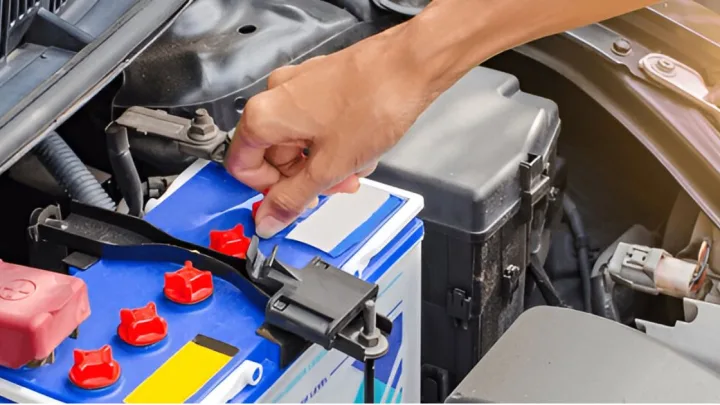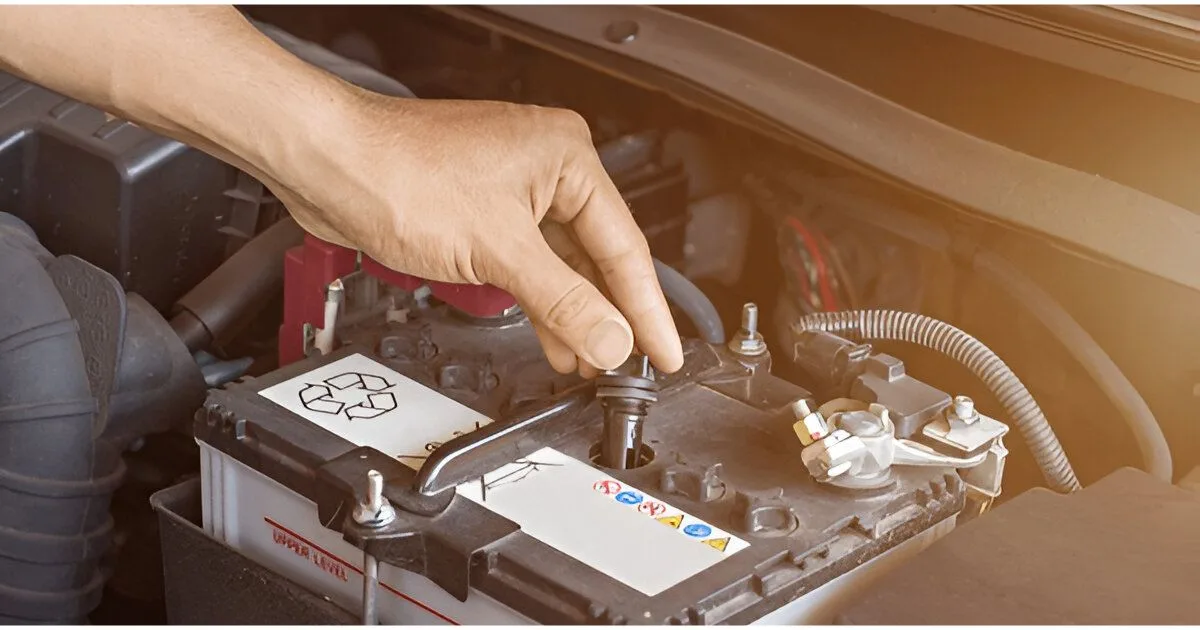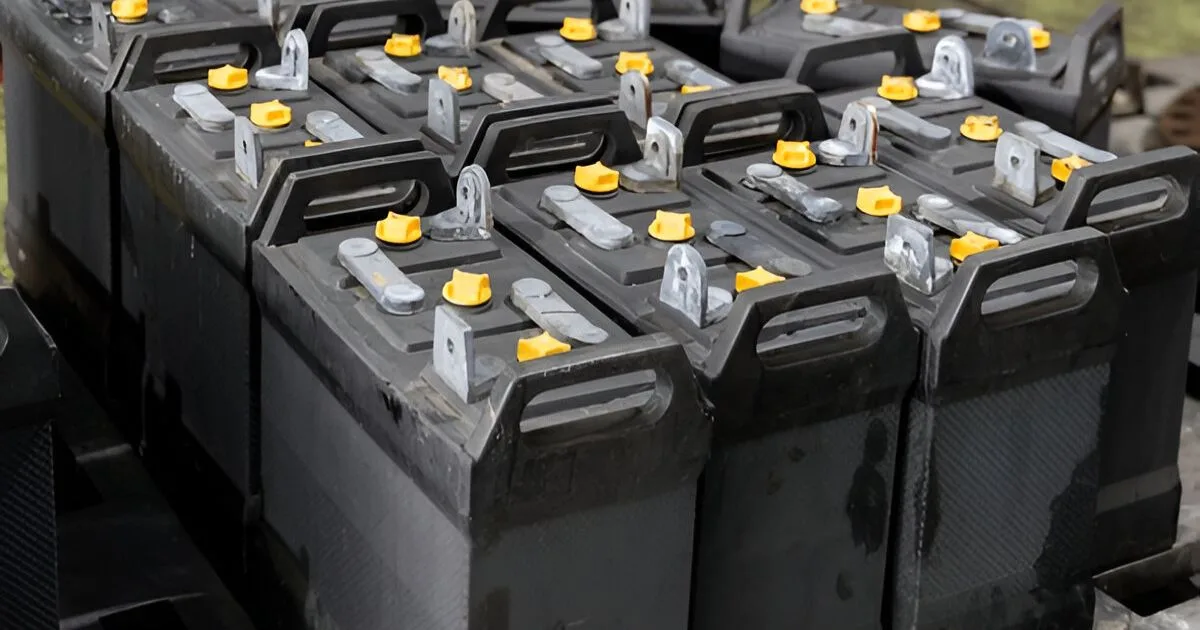
To remove a car battery cap, first, locate the cap on the battery, then gently twist or pull it off. Removing a car battery cap is a simple but crucial step in maintaining or replacing your vehicle's battery.
This task, though straightforward, is the gateway to a series of actions ranging from checking the battery’s electrolyte levels to installing a new battery. Ensuring you do this correctly can prevent damage to the battery and ensure safety. Car batteries are essential components, as they power all the electrical systems in your vehicle.
Proper maintenance, including regular checks under the cap, can extend a battery's life and prevent unexpected breakdowns. Remember, dealing with car batteries requires caution due to the acidic and potentially hazardous materials inside. Always wear protective gloves and glasses to safeguard against spills and splashes.
Introduction To Battery Cap Maintenance on a Car
Maintaining your car's battery is crucial. A healthy battery ensures your car starts reliably. Over time, batteries can corrode. This affects their performance. Regular checks and maintenance can prevent unexpected failures.
Importance Of Regular Battery Checks
Regular battery checks keep your car running smoothly. They ensure that the battery holds a charge. They also prevent breakdowns. A well-maintained battery can last longer. This saves money over time.
- Check battery life
- Inspect for corrosion
- Test battery performance
Safety First: Preparing To Work On Your Car Battery Cap
Safety is key when working with car batteries. Wear protective gear. This should include gloves and goggles. Ensure the car is off. Remove keys from the ignition. Keep metal objects away from the battery.
| Step | Action |
|---|---|
| 1 | Turn off the car |
| 2 | Wear safety gear |
| 3 | Remove keys |
| 4 | Keep metals away |
 Identifying Your Car Battery
Identifying Your Car Battery
Identifying Your Car Battery
Before removing your car battery cap, knowing your battery type is key. This knowledge will guide you through the right steps without causing damage. Let's delve into identifying your car battery and its specifics.
Types Of Car Batteries And Their Cap
Different car batteries come with various caps. Understanding these will ensure a smooth removal process. Here are the main types:
- Lead-Acid Batteries: These have removable caps for water checking.
- AGM Batteries: Sealed, maintenance-free with no removable caps.
- Gel Batteries: Also sealed, similar to AGM, no caps to remove.
Identify your battery type to determine if cap removal is necessary.
Locating The Battery In Different Vehicle Models
Car batteries are not always in the same spot. Here's a quick guide:
| Vehicle Type | Battery Location |
|---|---|
| Sedans | Under the hood, near the front. |
| SUVs | Often in the trunk or under a seat. |
| Trucks | Under the hood, towards the side. |
Check your vehicle manual if the location isn't clear.
Tools And Equipment Needed
Removing a car battery cap requires specific tools and gear. Ensuring you have the right equipment on hand is crucial for a safe and effective removal process. Let's look at the essential items you'll need to get the job done.
Essential Tools For Battery Removal
- Wrench set: To loosen and remove battery terminals.
- Screwdrivers: For prying off caps or holding clips.
- Battery terminal puller: To ease the removal of stuck terminals.
- Wire brush: To clean terminal posts and contacts.
- Memory saver: To keep your car's settings while the battery is disconnected.
Protective Gear For Safe Handling
- Protective gloves: To shield hands from acid and grime.
- Safety glasses: To protect eyes from corrosive materials.
- Apron: To keep your clothes clean and free from battery residue.
 Pre-removal Safety Measures
Pre-removal Safety Measures
Pre-removal Safety Measures
Before removing a car battery cap, safety is key. These steps ensure a smooth and risk-free process. Follow these precautions to protect yourself and your vehicle.
Disconnecting The Vehicle's Electrical System
Turn off the engine and remove the keys. Make sure all lights and electronics are off. This prevents electrical shocks and protects the vehicle's system.
- Locate the negative terminal, marked with a minus (-) sign.
- Use a wrench to loosen the negative terminal bolt.
- Carefully detach the negative cable from the battery.
- Repeat these steps for the positive terminal, marked with a plus (+).
Ensuring A Safe Working Environment
Work in a well-ventilated area to avoid harmful fumes. Keep flames or sparks away from the battery.
| Equipment | Description |
|---|---|
| Gloves | Wear to protect hands from acid and dirt. |
| Goggles | Shield eyes from potential splashes. |
| Apron | Protect clothes from stains and damage. |
Check the ground for any spills. Clean them up immediately. Secure pets and children away from the area.
Step-by-step Guide To Removing The Battery Cap on a Car
Regular car maintenance includes battery care. A crucial step is removing the battery cap. This guide makes the process simple. Follow these steps for a safe and effective removal.
Loosening The car battery cap: Techniques And Tips
Start by identifying your battery type. Most cars have a plastic cap. It protects the battery terminals. Here's how to loosen it:
- Wear safety gear like gloves and goggles.
- Find the battery location under the hood.
- Use the right tools. A wrench or pliers work best.
- Twist gently. Turn the cap counter-clockwise.
Some caps may need a screwdriver. Insert it into the slot. Turn it left to loosen the cap.
Troubleshooting Common Issues
Stuck caps are common. Don't worry. Use these tips:
- Check for corrosion. Clean with baking soda if needed.
- Apply penetrating oil around the cap. Let it sit.
- Tap the cap gently. Use the handle of a screwdriver.
- If still stuck, use a cap remover tool.
Never force the cap. It can break. Patience is key.
Inspection And Maintenance Post car battery cap Removal
Inspection and Maintenance Post Cap Removal is crucial for your car's performance. After removing the battery cap, it's time to check and care for the battery.
Examining The Battery Terminals
Visual checks on battery terminals spot corrosion early. Look for white, blue, or green substances. These are signs of corrosion. Ensure the terminals are tight. Loose terminals cause electrical issues.
- Check for damage: Look for cracks or wear.
- Test the connection: Make sure the terminals are secure.
Cleaning And Preventative Care
Clean terminals keep the current flowing. Use a baking soda solution and a toothbrush for scrubbing.
| Step | Action | Result |
|---|---|---|
| 1 | Mix baking soda and water | Creates cleaning paste |
| 2 | Apply to terminals | Breaks down corrosion |
| 3 | Rinse and dry | Prevents future corrosion |
Apply petroleum jelly. It protects terminals from moisture. This leads to less corrosion.
Regular checks ensure a long-lasting battery. Follow this routine every few months.
 Reinstalling The Battery Cap
Reinstalling The Battery Cap
Reinstalling The Battery Cap
Now, let's talk about Reinstalling the Battery Cap on your car. This step is crucial for keeping your car's electrical system safe and working well. Follow these steps carefully to make sure you do it right.
Securing The car battery cap Properly
First, place the cap back over the battery terminals. Make sure it fits snugly. If it doesn't fit right, it won't protect your car's battery as it should.
Use both hands to press down firmly until the cap clicks into place. This click sound means the cap is secure. A well-fitted cap keeps dirt and moisture out, protecting the battery.
Final Checks Before Starting The Car
Before you start your car, do these final checks:
- Look around the battery area. Make sure no tools are left behind.
- Check the battery cap again. It should be tight and secure.
- Inspect the battery terminals. They should be clean and free of corrosion.
After these checks, you're ready to start your car. A well-installed battery cap ensures your car runs smoothly. Remember, taking care of your car's battery extends its life and improves your car's performance.
Pro Tips For Battery Maintenance
Keeping your car battery in top condition is crucial. It ensures your vehicle starts smoothly and your electrical systems work flawlessly. Follow these pro tips for effective battery maintenance.
Long-term Battery Care Strategies
Regular Inspection is key. Check your battery often for signs of corrosion. Corrosion can cause problems, but it’s easy to clean. Use a mixture of baking soda and water. Brush it onto the terminals with an old toothbrush. Rinse it off with cool water and dry with a clean cloth.
- Keep It Charged. A full charge extends battery life. Use a car battery charger periodically, especially if you don't drive often. This keeps the battery from discharging fully.
- Secure The Battery. Ensure the battery is firmly mounted. Vibrations can damage the battery plates. Check the hold-down bar during your regular inspections.
- Monitor Fluid Levels. If you have a serviceable battery, keep the fluid level topped up. Use distilled water to fill the cells if needed. Never overfill.
- Avoid Short Trips. Short trips can prevent the battery from fully charging. Combine errands into one longer trip to allow the battery to charge fully.
When To Seek Professional Help
- Slow Engine Crank: If your engine takes longer to start, the battery may be failing.
- Warning Lights: A lit battery warning light indicates a problem. Get it checked promptly.
- Swollen Battery Case: Extreme temperatures can cause this. It suggests the battery may be damaged.
- Odd Smell: A rotten egg scent is a sign of a leaking battery. It needs professional attention.
- Age: Car batteries last about 3-5 years. Replace old batteries before they fail.
Seek a professional mechanic when these signs appear. They can safely test and replace your car battery.
Related Post
How to Test a Car Voltage Regulator With a Multimeter: Quick Guide
What is the Most Common Battery Cable Terminal: Key Insights
Why Sulphuric Acid is Not Used on a Car: Dangers Revealed
Can You Use Aluminum Foil on Car Battery Terminals? Boost Performance!
What Happens When Car Battery Cables are Wrongly Connected: Risks & Fixes
How to Install a Car Battery Holder: Quick & Secure Guide
How Do You Know If Your Car Alternator is Bad? Spot Signs Now!
Conclusion
Removing your car battery cap need not be a daunting task.
With the right tools and steps, you can do it safely and efficiently. Remember, always prioritize your safety by wearing protective gear and following proper procedures.
Keep this guide handy for a hassle-free battery maintenance experience.
Drive confidently, knowing you've mastered yet another aspect of car care.
Disclosure
Some links may be affiliate links. That means we may earn a small commission at no extra cost to you.